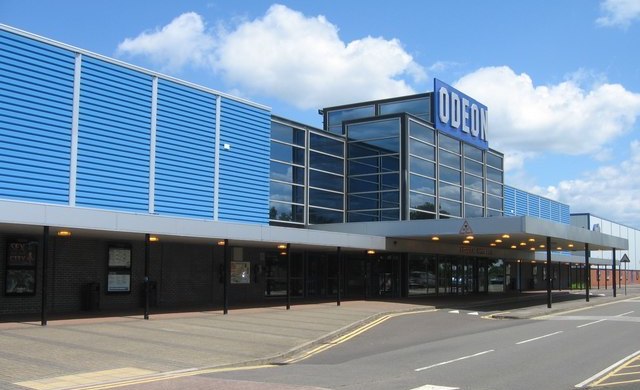In our latest anonymous ‘Below the surface’ section, Thames Tap’s occasional columnist, the Secret Agent, has gone through the mess some local authorities – including one close to home – got themselves into by investing in commercial property.
Between 2010-11 and 2019-20 there was a 28.7 per cent reduction in real terms in local authorities’ spending on local services.
That includes services such as some schools and educational facilities, waste and recycling, libraries, works to improve and maintain roads, not to mention social care provision and social housing.
In attempting to plug the funding gap, local authorities have increasingly adopted a policy of investing in commercial property which, for some, has delivered benefits including both the generation of income and local regeneration.
However, as with all investment classes, there are risks and for some authorities there have been examples of getting it spectacularly wrong, resulting, in one notable local example, in them having to effectively declare themselves bankrupt.
Income from commercial property investment is uncertain over the longer term, particularly when, as a direct result of the global pandemic, there has been a move away from occupying offices in favour of working from home.
So, whilst in a strong market with low interest rates, borrowing cheaply from central Government to invest in high yielding, well-tenanted commercial property, seems like a good idea; when faced with rising interest rates and weak demand, it becomes a more risky way to support the provision of much-needed services.
Yet the acquisition of commercial property has become a significant area of activity for some authorities in recent years.
The period 2016-17 to 2018-19 saw a step-change in scale. It is estimated that authorities spent £6.6 billion on commercial property in that period: 14.4 times more than in the preceding three-year period.
The bulk of commercial property acquisition is undertaken by a relatively small, albeit growing, group of authorities. Some 80 per cent of the cumulative spend in the sector over the period 2016-17 to 2018-19, was accounted for by only 49 of the 390 local authorities.
However, there is also a strong geographical skew: authorities in the South East accounted for 52.9 per cent of acquisitions by value during that three-year period.
Local authorities acquire commercial property for a variety of reasons, yield being generally regarded as the most important. Furthermore, a substantial amount of spending is on property outside authorities’ boundaries, including almost 48 per cent of all acquisitions by value in 2018-19.
In general, spending within an authority’s boundaries may have local policy objectives in addition to generating yield. By contrast, out-of-area acquisitions are more likely to be predominantly for yield. Data on the net yields achieved by authorities is limited but it appears that some report yields of no higher than 2.6 per cent.
There are inherent potential risks associated with the acquisition of commercial property. These include ‘specific risk’ associated with each individual property, such as the length of the lease or the financial strength of the tenant.
Local authorities also face ‘systematic risk’, which reflects movements in markets: in the last recession UK commercial property values and market rental values both fell. In recent years, systematic risk is apparent in the performance of the retail sector with the shift to online sales, among other factors, leading to growth in vacancy and void rates.
The implications of these risks will depend on the level of exposure of individual authorities’ finances to their property portfolios and the capacity of their governance to mitigate these risks.
Borrowing has played an important role in supporting the acquisition of commercial property by authorities. Authorities’ capital programmes are resourced from multiple sources, rather than by linking individual purchases to specific funding or financing lines.
Consequently, it is difficult to identify the amount of borrowing used to support commercial property acquisition across the sector. However, for the £6.6bn spent on commercial properties from 2016-17 to 2018-19 it is estimated that between £2.5bn (38.5 per cent) and £6bn (91.2 per cent) of this spend was financed by ‘prudential borrowing’.
Prudential borrowing includes external borrowing but also internal borrowing, a treasury management practice whereby an authority temporarily uses cash it is holding for other purposes.
In October 2019, just prior to the onset of the pandemic, HM Treasury (HMT) announced a one percentage point increase in the cost of new Public Works Loan Board (PWLB) loans due to substantially increased use of such lending in previous months.
HMT wanted to ensure that there was sufficient headroom within PWLB’s statutory limit for authorities to continue to borrow over the medium term. HMT said the rise was not connected specifically to local authorities’ borrowing for commercial property investment.
However, it became clear that some authorities which had been planning to use PWLB lending to support future commercial property acquisition, might now be forced to reconsider their plans.
A small group of authorities saw significant increases in their external borrowing and debt servicing costs linked to the acquisition of commercial property. The small group of district councils (8.5 per cent) that have been most active in the acquisition of commercial property saw their stock of external debt increase by £88.8m at the median.
However, in the absence of detailed information on the contribution made by commercial property to authorities’ revenue budgets and their contingency arrangements, it is hard to assess fully the financial risks to which authorities are exposed.
Slough Borough Council is now in the process of trying to sell commercial property assets worth £600m after its property investment spree went horribly wrong. The move is part of a rescue plan imposed on it by Government. The local authority is not the only council to have invested heavily in commercial property which finds itself now feeling the pinch. At a time when interest rates were at rock bottom, councils saw an easy and quick fix to their cash flow problems: purchasing income-producing commercial property investments.
The trouble is that many of these investments were made outside borough councillors’ and council staff members’ circles of competence, and with a rapidly declining High Street, coupled with the Covid pandemic, many of these seemingly lucrative deals have turned sour.
Tenants went bust, properties became empty and what had been cash cows became cash guzzling liabilities. Slough is even being faced with the ignominy of having to sell its own head offices which it can no longer financially justify.
The wider practice of local authority investment in commercial property is now under greater scrutiny from central Government, following these outcomes. The Treasury is looking at restricting the use of the PWLB, stopping lending to local authorities borrowing money for commercial property investments. The effectively-bankrupt Slough Borough Council is now directly overseen by Government-appointed commissioners and is being forced to implement a three-year recovery plan.
Following central Government intervention, Slough’s council leaders now say they need more than £100m of outside support for the financial year 2021-22, a figure which is far higher than their initial estimate of £15m.
The borough is said to have invested £96m betting on commercial property providing them with a steady cash flow of income. That was before Covid hit and some of their investments turned sour.
A cinema in Basingstoke (pictured) was of one of the council’s hardest hit investments during the pandemic with its superstores in Gosport and Wolverhampton probably faring little better.
Slough Borough Council is now trying to dispose of around one half of its £1.2bn commercial property estate, after Government ministers criticised the council’s leadership for ‘deeply concerning’ mismanagement of its finances.
Slough’s problems are potentially the tip of the iceberg. These types of commercial investments by councils have been part of an upward trend and many are likely to cause Government to have to step in to oversee other councils as the pandemic affects their investments and their, already tight, budgets.
English councils are said to have spent around £6.6bn of their taxpayers’ money buying commercial property over the three years to 2018-19, according to the Public Accounts Committee.
There are now substantiated fears that this spending spree could turn nasty because commercial property asset prices have, in some cases, halved from their pre-Covid values. The shift towards online shopping and home working during lockdown tipped many tenants over the edge, cutting council landlords’ cashflows off at the source.
Along with nine other councils, Slough was in receipt of £15m after Covid hit, as part of Whitehall’s rescue plan to help struggling councils. But in Slough’s case, it was just not enough. It quickly and effectively declared itself bankrupt in July 2021 after discovering an even bigger black hole in its finances.
The intervention, now under Michael Gove’s remit, is to give Government commissioners the power to override a council’s financial management and strategic decisions if its leaders fail to deliver on a supervised improvement plan.
Kemi Badenoch, a minister in Mr Gove’s department, has said of Slough council that damning reports into how the council is run ‘paint a deeply concerning picture of mismanagement, of a breakdown in scrutiny and accountability and of a dysfunctional culture’.
She went on: “The council’s contract management is weak and has resulted in rushed procurement, missed exit opportunities and has delivered poor value for money. There is little evidence that the council understands the entirety of its commercial investments and their impact on its finances.”
Ms Badenoch said Slough cannot become financially self-sustaining without considerable Government support, adding: “The council cannot demonstrate a track record of making difficult decisions or of taking decisive action to bring about improvements.”
Cllr James Swindlehurst, the Labour leader of Slough Borough Council, said in the early stages of the Government’s intervention: “There are still many difficult decisions ahead of us. We are financially in a very challenging place, and we will be asking government for a level of capitalisation direction which has never before been made by a local authority. I accept the Government intervention; understand why they feel it is necessary and I look forward to welcoming the commissioners to Slough and working with them.”
Other councils proceed at their peril!
Image: Sebastian Ballard, CC BY-SA 2.0 <https://creativecommons.org/licenses/by-sa/2.0>, via Wikimedia Commons-
Opinions in this column are those of individual contributors and not those of UK Property Forums. If you are involved in the property world and wish to contribute an anonymous article, contact Alan Bunce at alan@ukpropertyforums.com
© Thames Tap (powered by ukpropertyforums.com).
Sign up to receive your free weekly Thames Tap journal here.
















